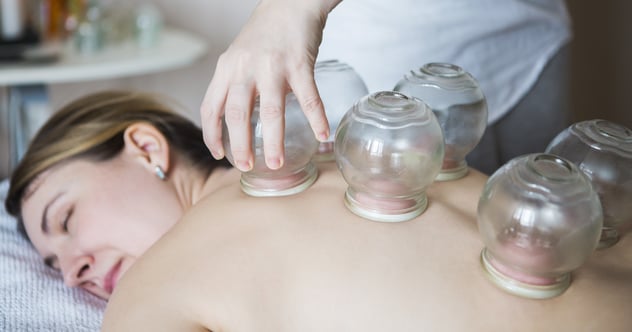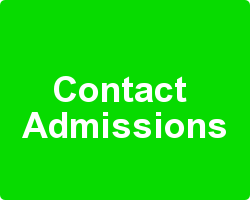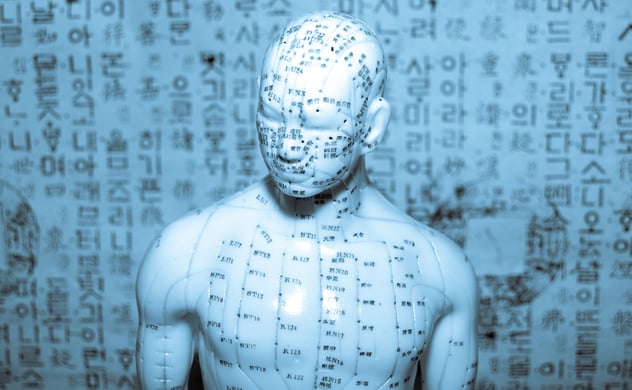
Acupuncture, an ancient form of Traditional Chinese Medicine, has become very popular in the United States as a form of alternative healthcare. Many physicians are referring patients to an acupuncturist for pain, while some hospitals are incorporating acupuncture treatments into their integrative care models. While you might have heard of acupuncture - the treatment of inserting small sterile needles into special energy points called meridians, you might not have known that acupuncture is only one part of the overarching Traditional Chinese Medicine system.
Students of TCM and acupuncture spend four years of training to complete a Chinese Medicine degree, learning acupuncture in addition to a whole slew of other techniques, diagnostic principles, and herbal medicine. Do you remember seeing the circular imprints on Michael Phelp’s back at the 2016 summer Olympics in Rio De Janeiro? He had received cupping therapy, (explained more below) which is an example of another treatment tool commonly used by acupuncturists. In this article we will discuss eight frequently used techniques in Chinese medicine that the general public might not be aware of.
Cupping
Cupping therapy can be viewed as a reverse massage by pulling up on the skin versus the pressure applied down on the skin in a traditional massage. This releases muscle tension by creating better blood flow to the area. Some acupuncturists also use cupping therapy for facial rejuvenation and lymph system drainage. Not only can cupping therapy be used for a variety of health reasons, but there are also various types of cupping sets. There are glass cups, known as “fire cupping,” silicone suction cups, plastic cupping sets and smaller cup sets used for facials and lymph drainage. Cupping therapy is often used alongside acupuncture to go deeper on certain points in the body where the pain is most severe.
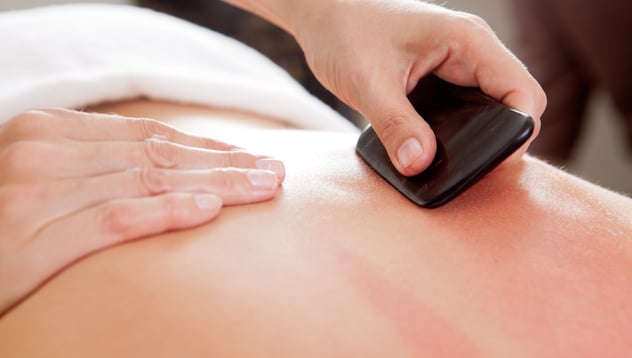
Guasha
Guasha, also known as “scraping technique,” is another tool acupuncturists use. The health functions are similar to cupping therapy; using pressure to break up fascia and muscular tension, thereby creating better blood flow to those areas. Commonly used tools for guasha include ceramic spoons, stainless steel made tools, and jade or other stone material shaped into a tool. Although this technique is used less frequently than cupping, it has tremendous healing benefits. Guasha, while being a mostly painless treatment, can often leave behind what’s called “sha”, or a redness on the skin.
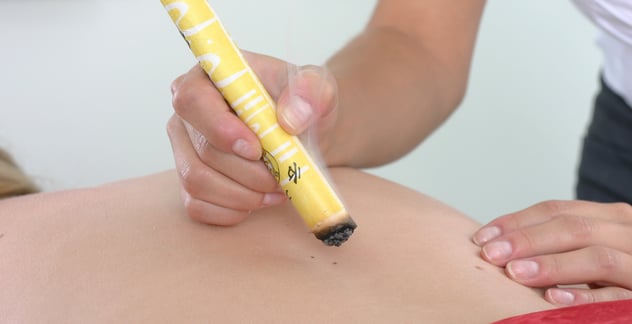
Moxibustion
Moxibustion, also referred to as “moxa,” is made from the mugwort plant, and is used as a healing modality. Using moxibustion can be a great way to treat a disease in which one cannot use acupuncture needles. Burning moxibustion can heal tissue and allow blood to circulate better at a specific area. There are different forms of moxibustion use, such as direct or “rice” moxa, warm needling, and indirect or “stick” moxa. Some styles also use large moxa cones on slices of ginger or garlic.
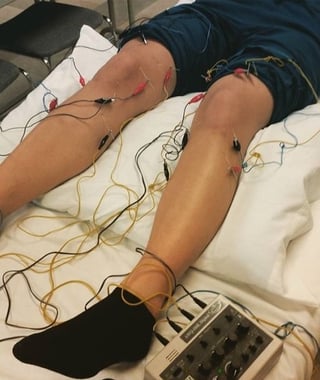
Electrical Stimulation (e-Stim)
Electrical stimulation, also referred to as “e-stim,” is a machine that creates an electrical current. This is used by attaching small clamps to the end of acupuncture needles and running a current through them. Because metal is an electrical conductor, there is a set of needles that are used, allowing the current to flow between them. Therefore, activating those acupuncture points and muscles even more. Some devices have multiple channels so that the practitioner can use multiple sets of points with the estim. Estim is used for musculoskeletal disorders, bell's palsy, paralysis, and much more. This technique is similar to the use of TENs units.
Bloodletting
Bloodletting is a way to oxygenate the blood by allowing stagnate blood to be released and newer blood to fill the vein up. This can be used to release the tension and appearance of varicose veins, as well as reduce swelling and inflammation from acute injuries. Bloodletting is used with a hypodermic or lancet needle to prick the area needed to bleed. Sometimes a practitioner will use a glass cup to place on top of the local area pricked to bleed in order to draw more blood from the area.

Tuina
Tuina, literally translated to mean “pinch and pull,” is a form of asian bodywork, which is similar to massage. With tuina, practitioners use acupressure points and specific techniques in order to treat musculoskeletal and digestive issues, insomnia, and aches and pains. This system uses the same theories and basis from acupuncture, just incorporating a pinch and pull bodywork method. Tuina is a great treatment style used by pediatric practitioners because it can be very gentle and effective.Medical Qigong
Medical Qigong is an energy healing method, without the use of needles, and can have direct or indirect contact from the practitioner. It’s a way for the practitioner to manipulate the energy of the body to help things flow better, or get rid of disease. Medical Qigong treatments can also include the use of meditation and teaching the patient gentle movements to help strengthen one’s physical, mental, and spiritual self. This treatment style is very relaxing, and at the same time energizing.Seven Star Needling
The seven star needle, also known as plum blossom needle, is made of five to seven needles which are placed together at the end of a long handle. This style of superficial tapping can be used to treat skin diseases, headaches, nervous system disorders, hair loss, paralysis, and painful joints. Plum blossom needles aren’t as commonly used, but most practitioners are trained in the style and may use it if they feel it is necessary.
Come experience the benefits of these treatments at our 2 Austin area acupuncture clinics!
 Want to learn more about TCM treatments and study Chinese medicine at AOMA? Click below to get more information on becoming an acupuncturist.
Want to learn more about TCM treatments and study Chinese medicine at AOMA? Click below to get more information on becoming an acupuncturist.

